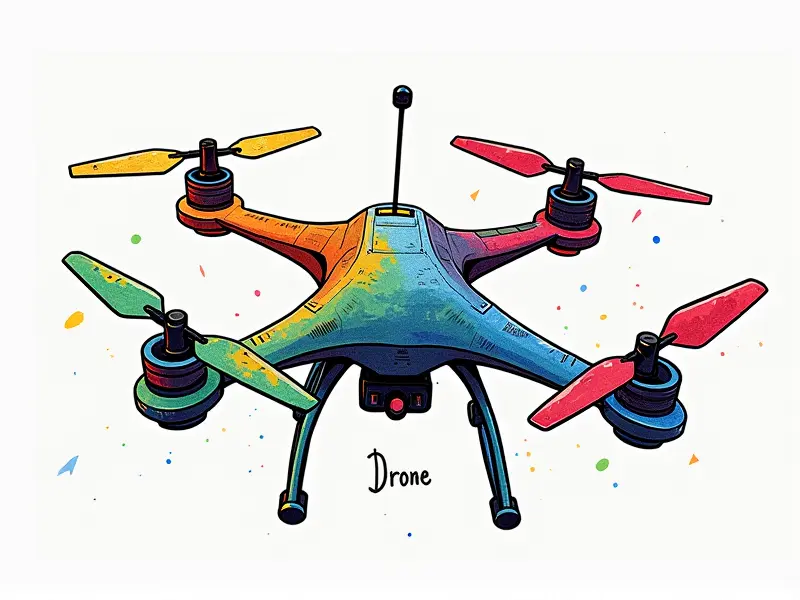Autopilot for beginner drones?

For those new to the world of drones, navigating through the myriad options and features can be overwhelming. One crucial aspect that often intimidates beginners is choosing an appropriate autopilot system. This article aims to demystify the process by providing insights into the best autopilot systems tailored for novice drone flyers.
Best Autopilot Systems for Beginner Drones
The market offers a variety of autopilot systems designed specifically with new users in mind. Some top contenders include:
- Ardupilot: Known for its robust feature set and extensive community support, ArduPilot is highly recommended for beginners.
- PX4: This open-source autopilot system offers advanced features like terrain following and object avoidance, making it ideal for those looking to push the boundaries of drone technology.
Choosing the Right Autopilot for Beginners
Selecting an autopilot system requires careful consideration. Key factors to consider include:
- User-Friendliness: Look for systems that offer intuitive interfaces and straightforward setup processes.
- Battery Efficiency: Ensure the autopilot consumes minimal power, extending flight times.
- Compatibility: Check if the system is compatible with your drone model and any additional hardware you plan to use.
Navigate Like a Pro: Best Autopilot for Novices
To navigate like a pro, beginners should focus on autopilots that offer reliable GPS tracking, obstacle avoidance, and automated flight modes. These features not only enhance safety but also provide peace of mind during flights.
Easy-to-Use Autopilots for New Drone Flyers
Several autopilot systems are designed with ease-of-use in mind:
- DJI Assistant 2: This software is specifically tailored to DJI drones, offering a user-friendly interface and comprehensive flight planning tools.
- Mavlink: Mavlink provides a simple yet powerful communication protocol that integrates seamlessly with various autopilot systems.
Essential Autopilot Tips for New Drone Enthusiasts
To get the most out of your drone's autopilot system, consider these tips:
- Read Documentation Thoroughly: Familiarize yourself with all available documentation and tutorials.
- Practice Regularly: The more you practice using different flight modes and features, the better your proficiency will become.
- Join Online Communities: Engage with other drone enthusiasts to learn tips and tricks from experienced users.
Top Autopilot Features for Rookie Drones
The following features are particularly beneficial for beginners:
- Auto Takeoff/Landing: Simplifies the process of getting your drone airborne and safely landing it.
- Return to Home (RTH): Ensures that your drone automatically returns to its starting point if signal is lost or battery levels are low.
- Waypoint Navigation: Allows you to pre-program flight paths, making complex maneuvers easier and more efficient.
Simplifying Drone Flying with Auto-Pilot Tech
Autopilot technology simplifies drone flying by handling many of the technical aspects automatically. Features like automated takeoffs, landings, and waypoint navigation reduce the learning curve for new users.
Beginner-Friendly Drones with Built-in Autopilot
Several drones come equipped with built-in autopilot systems:
- DJI Mavic Mini: Known for its compact size and ease of use, the Mavic Mini includes a robust autopilot system.
- Hubsan X4 H107D: This affordable quadcopter offers basic autopilot features such as GPS tracking and RTH functionality.
How to Select an Autopilot for Your First Drone
Selecting the right autopilot involves several steps:
- Determine Your Needs: Consider what you want to achieve with your drone (photography, racing, etc.).
- Evaluate Compatibility: Ensure that the autopilot is compatible with your chosen drone model.
- Research Reviews and Recommendations: Look for user reviews and expert recommendations to gauge performance and reliability.
Must-Have Autopilot Functions for Newbies
The following functions are essential for new users:
- Battery Monitoring: Real-time battery status alerts help prevent unexpected landings due to low power.
- Obstacle Avoidance: Prevents collisions with objects, enhancing safety during flights.
- Stabilization: Ensures smooth and stable footage even in windy conditions.
Autopilot Benefits for Beginners in Drone Racing
For those interested in drone racing, autopilots offer several advantages:
- Enhanced Precision: Automated flight modes allow for precise control and maneuvering during races.
- Safety Features: Functions like RTH and obstacle avoidance reduce the risk of crashes and damage to your drone.
Conclusion
Choosing an autopilot system is a critical decision for any beginner drone flyer. By considering factors such as user-friendliness, battery efficiency, and compatibility, you can select a system that enhances your flying experience while ensuring safety and reliability. Whether you're into photography or racing, the right autopilot will help you navigate like a pro from day one.

